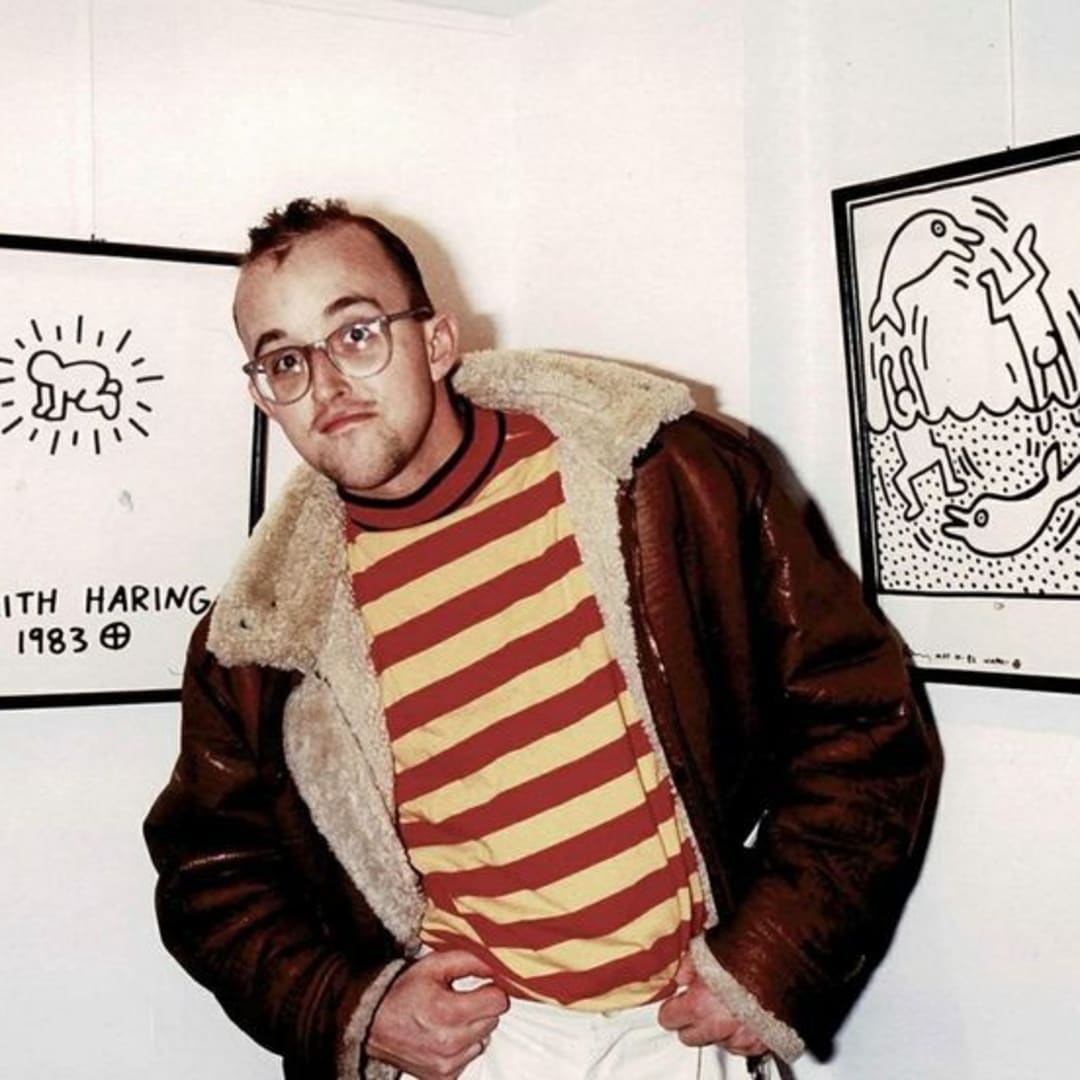Keith Haring art is near and dear to us at Vertu Fine Art. Haring is an artist’s artist. Like Warhol, Lichtenstein and Johns, Keith Haring was destined to become a Pop Art superstar. But unlike the Pop Artists who leveraged the emotional language of well-known commercial icons, Haring developed his own iconic figures and turned them into commercial art icons. It’s as though he came about Pop Art stardom in reverse. While other artists of the movement painted commercial subjects in order to gain the fame that freed them to do their own thing. Haring rejected commercial art as a student, choosing instead to create art as he felt compelled; his will and determination pulling him toward his destiny.
While he may have approached Pop Art differently, Keith Haring was absolutely a willing participant and a giant figure within the movement. He shared much with the Pop Artists of his time, both in terms of his New York City affinities and his consciousness of the phenomenal circumstances that fueled his fame. For many of us, what’s so endearing about Haring is the manner in which he created his own opportunities and his own fortune. While many starving artists were waiting for opportunity to knock on their door, Keith Haring found opportunity in the New York City subway system and blew the opportunity door off its hinges. Armed with white chalk, Haring turned the black backgrounds of vacant advertising posters underground into his own personal canvasses and got to work showing off his chops.
Like other successful Pop Artists, Keith Haring had a knack for understanding how best to market himself and his work. By the mid-1980’s, when his popularity apparently turned him into an “overnight success,” Haring had developed a knack for stoking the fires of success and capitalizing on his unique brand. Originally taken aback to learn that his subway drawings were turning up in galleries and commanding a nice price; and that his iconic style was showing up on commercial items (such as t-shirts and sneakers) overseas, Keith Haring took matters into his own hands, opening the Pop Shop and licensing his designs for trendy products such as Swatch watches. For those of us who lived through the eighties, it’s easy to remember a period of time when Haring was everywhere!
What’s wonderful about Pop Art is indeed the accessibility of the work − the fact that a style of work is appealing to a uniquely wide audience, at a specific period of time. If any artist deserved such broad appreciation, it’s Keith Haring, an artist who was not an “affected” human being, but rather a normal person from Kutztown, PA who wanted nothing more than to follow his own path. Evidently, Haring touched upon a universal nerve of what’s appealing to people worldwide.
There are many conclusions one could draw about why Haring’s works are so fundamentally appealing. Keith Haring’s “movement lines” offer many options for interpretation by people of all cultures. The movement lines also offer so much in way of expression: representing dance and other rhythmic movement, the radiation of love and other emotive sentiments, and a wide variety of other actions depending on the individual works and viewer’s perspective.
Keith Haring’s Aztec influences and his portrayal of human and animal figures void of facial and other features (fingers, toes and such) lend child-like gender neutral and expression neutral affects to his subjects.
If you are a fan or Haring collector, please let us know if we can be of assistance − in helping you find works by the artist or keeping you informed about new Keith Haring works in the gallery.




